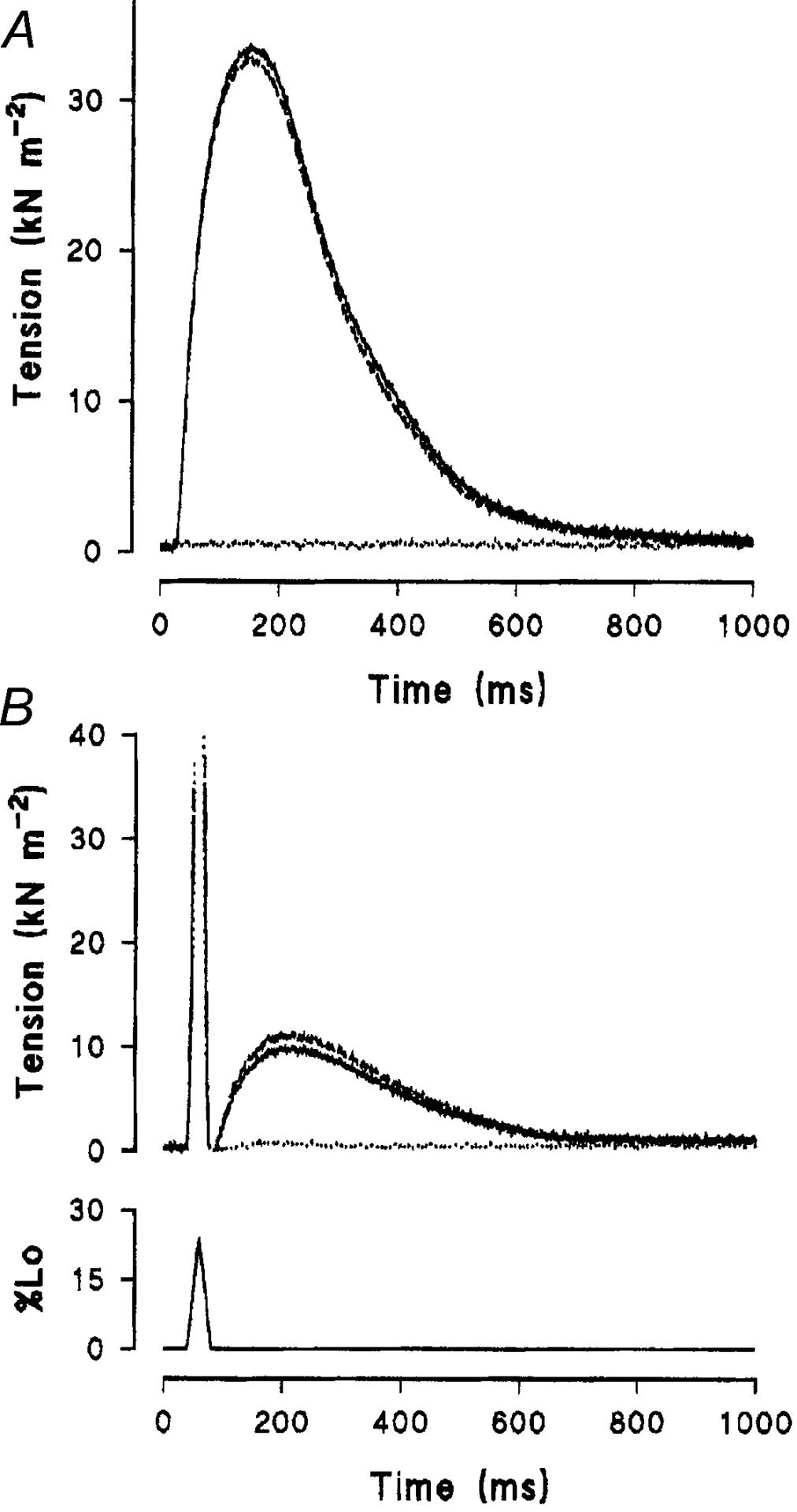In resting intact muscle fibres isolated from neonatal rats, a large triangular length change (amplitude ~20 % of initial muscle length, Lo) has three specific effects. Firstly, it leads to a transitory increase in resting muscle tension (Mutungi & Ranatunga, 2001) and secondly to an increase in intracellular calcium levels [Ca2+]i (Mutungi & Edman, 2002) both of which occur during the stretching phase. The stretch-release cycle is then followed by a twitch-like tension response that is ~30-50 % of the isometric twitch tension and is affected by 2,3-butanedione monoxime (BDM) and sarcomere length in the same manner as active twitch tension (Mutungi & Ranatunga, 2001) suggesting that it probably arises from actively cycling cross-bridges. The aim of the present experiments was to investigate the possible mechanisms underlying this stretch-induced increase in [Ca2+]i.
The experiments were performed at 20 °C using small muscle fibre bundles (~10-15 muscle fibres) isolated from neonatal rats (5-12 days old) killed using either carbon dioxide or sodium pentobarbitone (given intraperitoneally). Both slow (soleus) and fast (extensor digitorum longus, EDL) twitch muscles were used. The preparations were mounted horizontally between two stainless steel hooks, one attached to a servomotor and the other to a tension transducer in a muscle chamber with a glass bottom. After setting the initial length for optimum twitch tension, the preparations were subjected to rapid stretch-release cycles (amplitude ~25 % Lo) in the presence and absence of 1-2 mM lidocaine and 25 mM potassium. The changes in muscle tension and [Ca2+]i were then monitored. The levels of intracellular calcium were monitored using Fluo-3 AM following the procedure described by Caputo et al. (1994).
As the results in Fig. 1 show, the addition of lidocaine completely abolished both active twitch tension and the stretch-induced twitch-like tension response. Similar results were obtained with 25 mM potassium. Furthermore, both compounds also abolished the stretch-induced increase in [Ca2+]i and their effects were completely reversible. These results suggest that a large stretch, in resting neonatal rat muscle fibres, induces a depolarisation wave that leads to [Ca2+]i release by perturbing Na+ channels.
This work was supported by grants from The Wellcome Trust (G.M.) and the Swedish Medical Research Council (K.A.P.E.).

